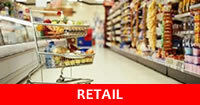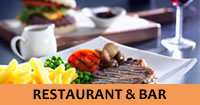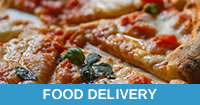
Tills or Cash registers give an affordable point of sale solution for small and medium sized retail shops and food service outlets and are a popular alternative to touch screen epos systems. The various peripherals - the software, the keyboard/keypad, the receipt printer, the cash drawer, the operator display and customer display - are integrated into a single unit that requires one mains power point.
A basic till starts in price from just £75. A medium specification cash register with cash drawer, receipt printer, journal printer, operator display, customer display panel, and a barcode scanner can be implemented for less than £400. A higher specification system till with stock control costs around £600.
Cash Tills / Cash Registers provide good basic functionality in terms of registering sales, printing the receipt and operating the cash drawer. More sophisticated tills support barcode scanning and stock control.
Most cash registers are able to provide sales analysis, management reports to show revenue, product performance, product-category performance and staff performance for that particular day. Higher end tills can provide reports for additional periods such as weekly and monthly..
Some people still have the image of a cash register as an old-fashioned mechanical machine. However, the new range of modern computerised electronic cash registers offer sophisticated functionality in a sleek design with integrated stock control, barcode scanning, 2-station printing, VAT/tax tables and more at a very reasonable cost.
Advanced features include support for promotions like mix and match, buy 2 get 1 free, discounts, links to a kitchen printer, data link to a PC or compact flash card, customer accounts and staff security levels and multi-level menus for product selection.
On machines like the Casio TE-4000, the cash drawer section can be dismantled from the main cash register for under-counter mounting. This provides a more sleek looking cash register which can be fixed to your retail counter, using less space and looking much better. The Sharp UP-800 also offer the same advantage.
With a cash register, you can either just punch in prices to register sales transactions and print a receipt or you can setup all your individual products and related information before use. The former method provides you with an instant sales solution, the latter will involve some initial time but yield more meaningful sales, management and performance reports. A compromise would be setup 'departments' or product categories rather than list all individual product lines, and that allow a certain level of sales analysis and separation if different VAT rates apply to different products.
The disadvantage of tills is that there are only handful of major manufacturers (Casio, Sharp, SAM4S) so choice is limited, the software features are hardcoded into the machine so features cannot be readily customised, updated or enhanced and new machines are only released every few years. The character-size limits for product/category descriptions is limited, and the machine (or individual components within the machine) cannot be readily upgraded or changed - it has to be replaced entirely if you want a different specification.
Most cash registers operate stand-alone so you cannot readily networking multiple machines together for consolidated reporting. The features for table management and keep track of restaurant/cafe bills is therefore limited where you need multiple tills.
Cash registers are not as easy to program as Touchscreen POS systems which usually have easy to use menus and screens. On cash registers, you usually have to switch to certain modes, enter service codes and other parameters manually on the keyboard to carry out programming changes.
Similarly, usage is not as simple as Touchscreen POS systems which can be set to show only the menus/items required at that point, whereas on a cash register you are presented with a full physical keyboard of buttons and you have to choose from that larger set.
The small operator screen size means information about the bill / transaction is limited for both the customer and the operator. Whereas on a touchscreen POS system the full bill can be seen on a screen with wider descriptions and more details for both the operator and customer.
Cash registers may store a journal of previous transactions but this is limited by memory constraints and is held in audit trail format so not always suitable for extracting date-ranged reports. Whereas on a touchscreen system with a transaction database it is possible to review inidividual historic transactions and run reports based on a partcular date period.
Cash registers generally do not have much support for connecting additional peripherals such as weighing scales, kitchen printers, integrated credit card machines etc (although some do support barcode scanning and an external printer).
While entry-level and mid-range cash registers can be setup by end-users themselves, the more advanced system cash registers usually require an experienced person to do the setup and programming which may not be straightforward on some machines. You may also incur ongoing future costs for additions and changes required to the programming.
If you have menu items programmed in, then the key labels / sheet would need to be re-printed and applied each time you remove or change a menu item. Whereas on a touchscreen system, the menu content is dynamically updated instantly.
If the point-of-sale requirements of a business are basic and the budget is limited, then cash registers provide an affordable, low cost EPoS solution for almost immediate implementation. But a hybrid touchscreen system, such as the SAM4S SPS-500 series provides greater advantage if the budget permits and is likely to serve the business needs for longer.







